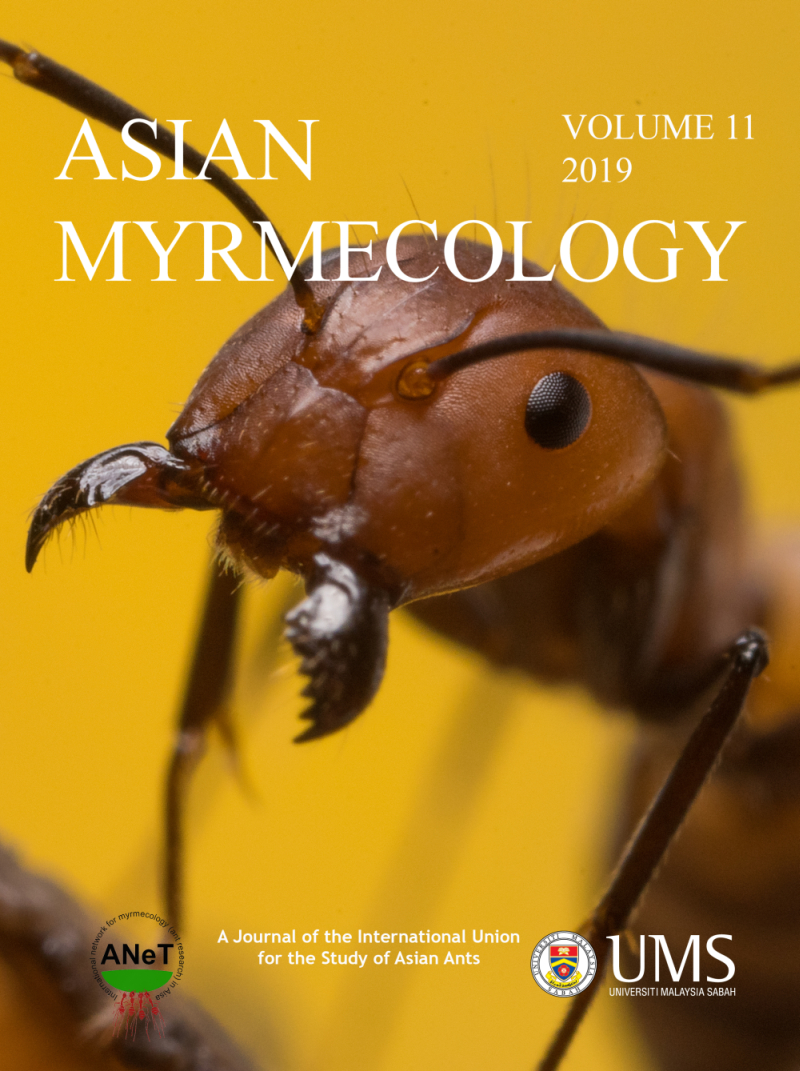ASIAN
MYRMECOLOGY
Image: François Brassard
Ecology and Distribution
DOI: 10.20362/am.009004
Asian Myrmecology 9: e009004 (1-12)
article first published online 14/February/2017
Geographic distribution of the weaver ant Oecophylla smaragdina
JAMES K. WETTERER*
Abstract:
Weaver ants (Oecophylla spp.) are conspicuous arboreal ants, which build distinctive nests in trees. In many regions, people use weaver ants for food, medicine, and/or as biological control agents. There are two recognized species of weaver ants: Oecophylla longinoda (Latreille, 1802) in Africa and Oecophylla smaragdina (Fabricius, 1775) in Asia, Australia, and the Western Pacific. Here, I mapped the geographic distribution of O. smaragdina based on >2700 site records from 21 countries: Australia, Bangladesh, Bhutan, Brunei, Burma (Myanmar), Cambodia, China, India, Indonesia, Laos, Malaysia, Nepal, Palau, Papua New Guinea, Philippines, Singapore, Solomon Islands, Sri Lanka, Thailand, Timor Leste, and Vietnam. The vast majority of O. smaragdina records come from areas with Tropical (Group A) climates according to the Köppen-Geiger system: rainforest (Af), monsoon (Am), and savanna (Aw). However, >250 records come from areas classified on the map as having a Subtropical (Group C) climates, mostly in the Himalayan foothills of India and Nepal, southern China, northern Vietnam, and the southern coast of Queensland, Australia. Almost all these sites are classified as dry winter subtropical climate (Cwa). A few O. smaragdina sites are classified as having Arid (Group B) climates, all from warm semi-arid (BSh) areas. This range map based on site records corrects inaccuracies in earlier published range maps.
Keywords:
biocontrol, biogeography, entomophagy, geographic range
Get PDF (1170K):
Wilkes Honors College, Florida Atlantic University, 5353 Parkside Drive, Jupiter, Florida 33458 USA
*Corresponding author's email: wetterer@fau.edu



